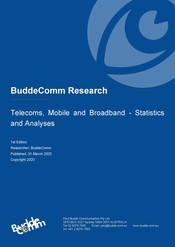Australia - Broadcasting and Pay TV - Overview and Analysis - 2005

Last updated: 8 Dec 2005 Update History
Report Status: Archived
Report Pages: 14
Analyst: Kylie Wansink
Synopsis
Free-to-Air (FTA) Broadcasters have failed to embrace the new trends that would require them to come up with innovative new programs and programming for their viewers. By concentrating on these rearguard skirmishes rather than looking at new opportunities, they are slowly losing out. Broadband TV is a clear threat to them. In order to grow, the pay TV industry will either have to lower its prices, which it can only start to look at when it has arrived in more profitable territory, or bundle access to other services at an incremental charge. By early 2005, pay TV penetration had reached 26% and 500,000 subscribers had upgraded to digital packages. Although its advertising base is growing, the radio market is losing share to other media sectors such as TV. Over the longer term, the eventual introduction of digital radio could further pose a threat to the financial viability of the industry. However, digital Radio is still years away from being introduced.Related Reports
- Australia - Telecoms, Mobile and Broadband - Statistics and Analyses
- Australia - Data Centre Market
- South Pacific Islands - Telecoms, Mobile and Broadband - Statistics and Analyses
- Samoa - Telecoms, Mobile and Broadband - Statistics and Analyses
- Papua New Guinea - Telecoms, Mobile and Broadband - Statistics and Analyses
- New Zealand - Telecoms, Mobile and Broadband - Statistics and Analyses
- French Polynesia - Telecoms, Mobile and Broadband - Statistics and Analyses
- New Caledonia - Telecoms, Mobile and Broadband - Statistics and Analyses
- Vanuatu - Telecoms, Mobile and Broadband - Statistics and Analyses
Share this Report
TMT Intelligence
A platform to scale your intelligence tasks
Monitor critical insights with our AI-powered Market Intelligence Platform gathering and analyzing intelligence in real time. With AI trained to spot emerging trends and detect new strategic opportunities, our clients use TMT Intelligence to accelerate their growth.
If you want to know more about it, please see:
Research Methodology
BuddeComm's strategic business reports contain a combination of both primary and secondary research statistics, analyses written by our senior analysts supported by a network of experts, industry contacts and researchers from around the world as well as our own scenario forecasts.
For more details, please see:
More than 4,000 customers from 140 countries utilise BuddeComm Research
Are you interested in BuddeComm's Custom Research Service?
Hot Topics
News & Views
Have the latest telecommunications industry news delivered to your inbox by subscribing to BuddeComm's weekly newsletter.